If you’re playing through Fire Emblem: Three Houses and you feel like you’re really digging the school setting, then here are 7 other JRPGs that you should totally check out if you’re interested.
Valkyria Chronicles 2
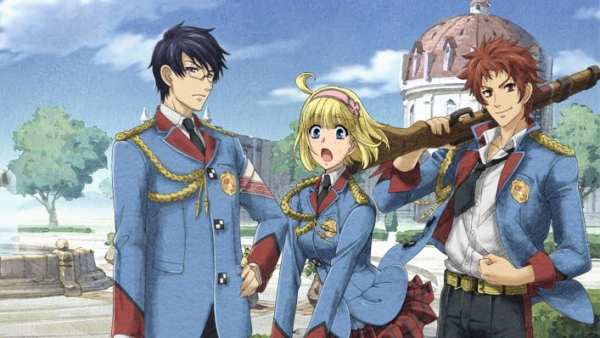
Valkyria Chronicles 2 should hit the sweet spot for any fan of Three Houses, as it has both the school elements and it’s a tactical RPG. Two years after the events of the first Valkyria Chronicles, a group of revolutionaries starts the Gallian Civil War, waging an ethnic cleansing against Gallians of Darcsen descent.
With Gallia’s regular army devastated by the army against the Empire, the duty falls to fledgling military cadets deployed on the front lines. While it certainly isn’t heavy on school simulation elements, Valkyria Chronicles 2’s story heavily revolves around school and the idea of these characters being students.
The game adopts a bit of a lighter tone than the first because of this, but there are still plenty of weighty war themes mixed in.
If you haven’t played Valkyria Chronicles before, the series’ combat is a hybrid of top-down strategy and real-time. You and the enemy will take turns moving units, who each have a movement gauge.
After you’ve moved a unit you can then enter action phase, which lets you manually aim and shoot in real-time.
Valkyria Chronicles has always had brilliant combat that requires some serious strategic thinking, and Valkyria Chronicles 2 is no exception. Although it can be a little tropey, it’s still a great school story about students balancing normal lives and war.
Persona Series
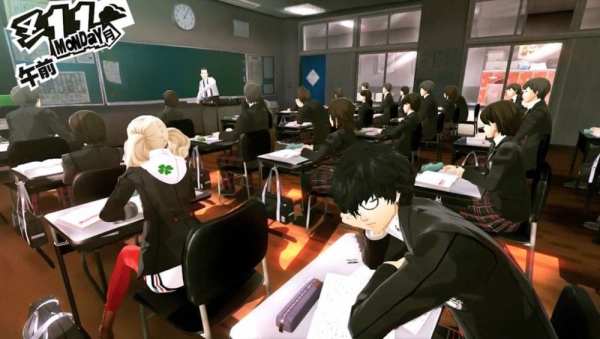
Persona is basically the OG when it comes to school-based JRPGs, and there’s no series out there that does it quite as well. Although the first game and Persona 2 have school settings, it wasn’t until Persona 3 that the simulation elements would really find their way into the series.
From Persona 3 on you’ll need to attend classes and go through daily school life, sometimes answering questions during class. This is juxtaposed against the more fantastical elements of the games, that involve your characters fighting deadly enemies called Shadows with the power of Persona.
The simulation elements really are what make Persona games what they are, and there’s a fascinating balancing act that you constantly need to do. Which friends are you going to hang out with? Do you want to play a game at the arcade, or study to boost your intelligence? Do you explore the dungeon or choose to do other activities?
On top of all these engaging features, each Persona game tells a gripping story that plays around with some incredibly complex themes and characters. All of the games are themed around adolescence and dealing with inner turmoil. The series has some of the best-written characters in all of gaming, and if the school setting is something you enjoy, then Persona is the game to play.
Final Fantasy Type-0

Final Fantasy is yet another huge JRPG franchise that has tackled the school setting, with Final Fantasy Type-0. The game takes place in the world of Orience, split between four massive “Crystal States,” basically countries. The world is thrown into chaos when the militaristic Milites Empire invades the Holy Dominion of Rubrum.
With war breaking out, an elite group of 14 students, known as Class Zero, from Rubrum have to take to the battlefield. Much like Persona, Type-0 is split between life at school, the Vermillion Peristylium, and taking on missions across the world of Orience.
While at school you can roam around and explore, talking to your classmates and growing closer to them. You can also take on a variety of different quests and the like to get rewards. Meanwhile, you also have the option of exploring Orience via the world map, and missions will take you to brand new locations.
Type-0 splits off from other Final Fantasy games by using a fully real-time combat system. Each of the 14 students can be controlled, and they all have a distinctly different fighting style.
Despite all of these changes from the rest of the series, Type-0 is still a game that manages to feel uniquely Final Fantasy, and the world of Orience is crammed with story and lore to learn about.
It may not reach the heights of Persona, but Final Fantasy Type-0 is still a good school-based JRPG.
Trails of Cold Steel
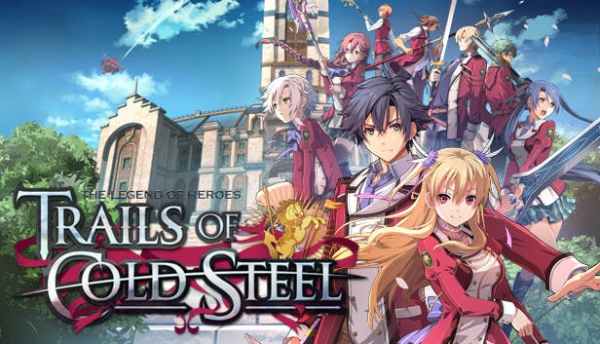
Fire Emblem: Three Houses actually takes a lot of inspiration from Trails of Cold Steel, from its story themes about nobles and commoners to the way you interact with students and get around Garreg Mach Monastery. Trails of Cold Steel takes place in the same world as the Trails in the Sky game, this time focusing on events in the militaristic Erebonian Empire.
You play as Rean Schwarzer, a member of the newly formed Class 7 at Thors Military Academy. Although Class VII doesn’t know the real reason they’ve been created, they work through their unique curriculum all the same.
Part of Trails of Cold Steel has you playing through school life, deciding which friends to spend time with, and completing tasks for the Student Council. The other part has the class going on Field Studies in different locations around the Empire, learning more about Erebonian culture and the problems that plague the country.
Trails of Cold Steel has absolutely superb world-building and storytelling, but it’s an incredibly slow burn. It’s not juvenile by any means, but much of the story does revolve around the school, and the main characters trying to find their place in the world.
As something that Three Houses clearly took inspiration from, Trails of Cold Steel is one of the best school-based JRPGs you can find.
Tokyo Xanadu
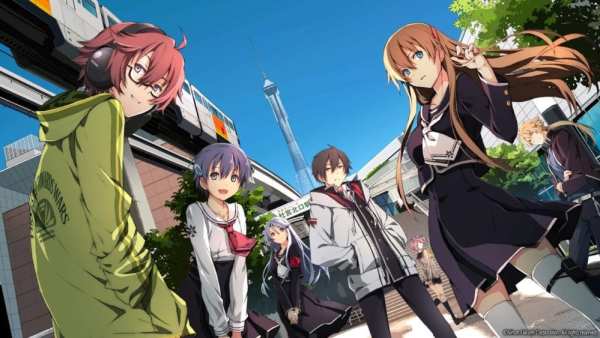
Tokyo Xanadu uses a lot of ideas from Trails of Cold Steel; after all it’s made in the same engine, but takes the setting to modern-day Tokyo. You play as Kou Tokisaka, a bit of a loner who spends his free time in high school working jobs instead of hanging out with friends.
One night after work, Kou tries to save a classmate named Asuka from thugs, and instead ends up getting pulled into a dangerous parallel world called Eclipse. From there he learns the true nature of the other world, and the threat against the real world.
Like many games in this genre, Tokyo Xanadu is split between exploring the school and world, then delving into dungeons to fight enemies. Instead of the turn-based combat of the Trails series, Tokyo Xanadu uses a full-on action system that lets you dynamically switch between characters while in dungeons, putting an emphasis on exploiting the enemy’s weaknesses.
There are some light simulation elements, although nothing as deep as Persona, and just like Trails Tokyo Xanadu has some expertly written characters with very involved arcs throughout the game.
Again, this is a super slow burn of a game, but the investment is more than worth it once you get to the end. Tokyo Xanadu is one of the hidden gems of the JRPG genre, and it’s a school story worth experiencing.
Enchanted Arms
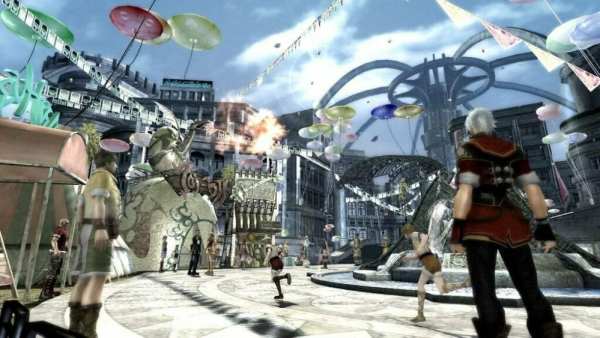
Believe it or not, Enchanted Arms comes from FromSoftware, the makers of the Dark Souls series. While it’s certainly not one of their better games, Enchanted Arms was at least a decent launch JRPG for the Xbox 360.
The game takes place on an alternate version of Earth, where a young man named Atsuma studies to become an Enchanter at the Enchanter’s University in Yokohama City. When Atsuma goes to a festival with his friends, an Earthquake causes the golems there to become hostile and attack humans, opening up even more chaos in the world.
Enchanted Arms is a pretty typical JRPG, without any of the simulation elements, but there’s an interesting combat system and some fun mini-games to play as well. Combat plays out on a tactical grid, although battles are smaller party-based affairs, rather than the grand battles you’d find in something like Final Fantasy Tactics.
If you’re looking for a quirky JRPG with a school setting, Enchanted Arms might just be a good pick to work your way through.
Mana Khemia: Alchemists of Al-Revis

Mana Khemia is the ninth entry in the Atelier series, but really you can jump into it without having played any of the prior games. It focuses on Vayne Aurelius, the son of a legendary alchemist who’s been invited to the Al-Revis Academy for alchemy training.
The game is built as a series of terms at the school, with each term being made up of several weeks. During these terms you can complete different courses and receive a grade, with the term then culminating in one major event or battle. The “alchemy” school gives Mana Khemia a bit of a different feel than other titles, and it uses its school setting and structure well.
Like most of the Atelier games, Mana Khemia heavily uses alchemy as a gameplay feature, allowing you to craft and create different items and equipment. It uses a pretty typical turn-based system for combat, but instead of levels characters earn grow points that you can then invest in their own unique “grow books” to strengthen them.
Mana Khemia may not be the easiest game to track down these days, but it’s worth trying if you’re on the hunt for more school JRPGs.
